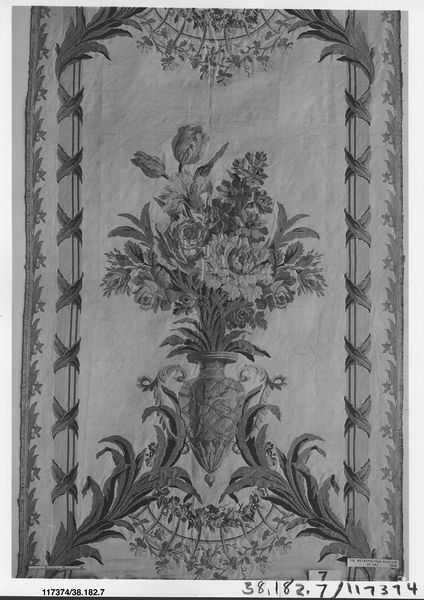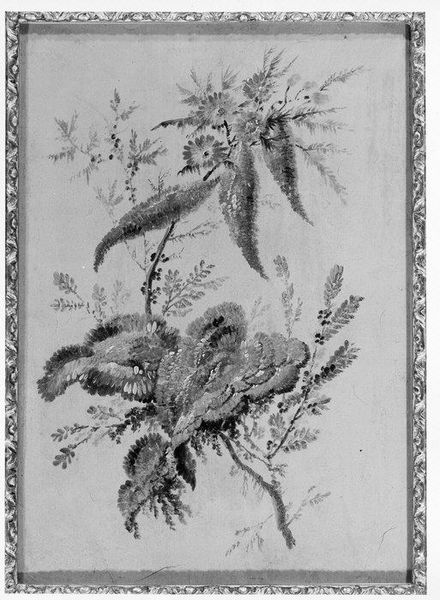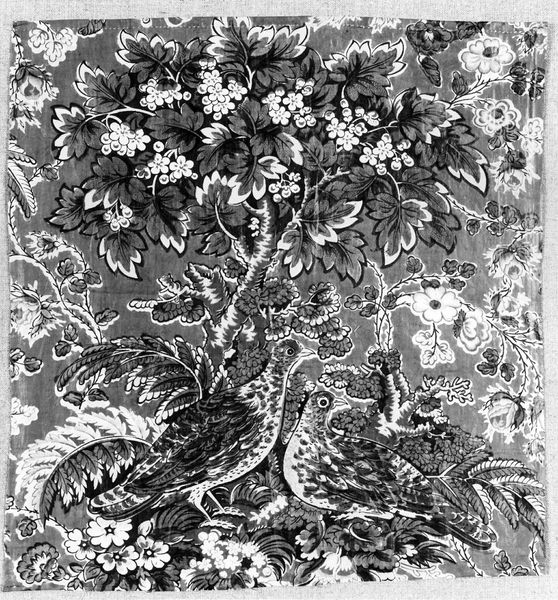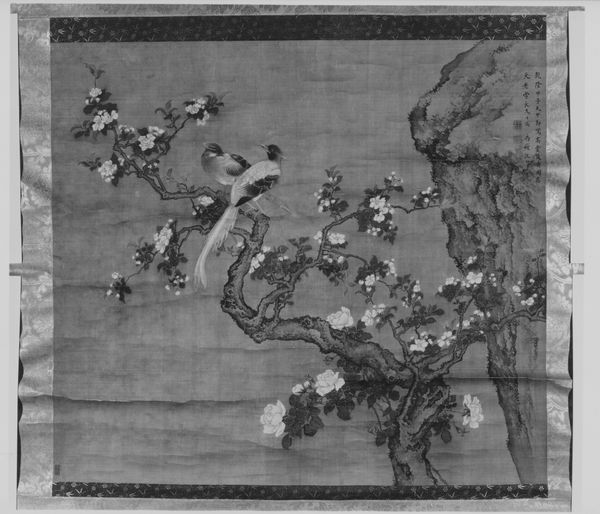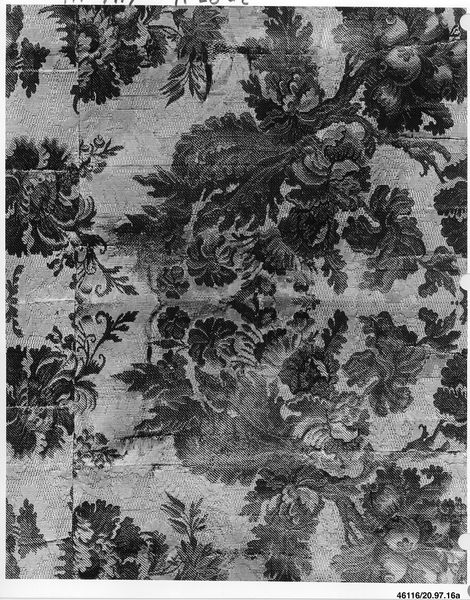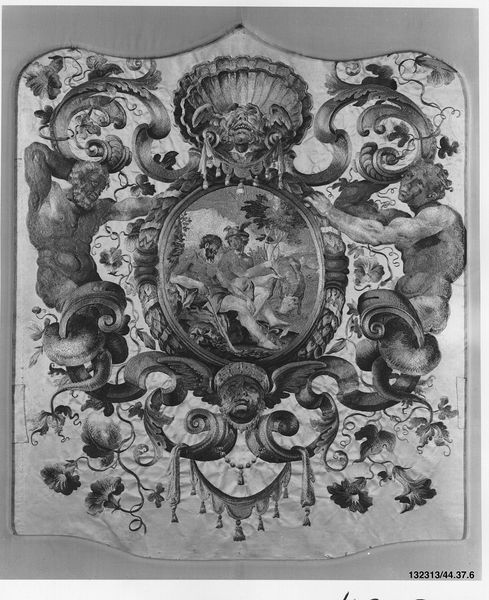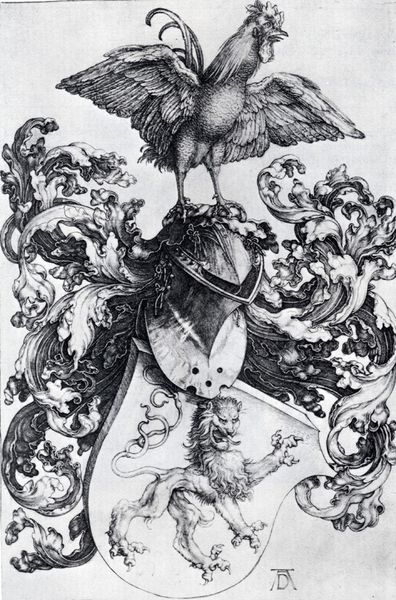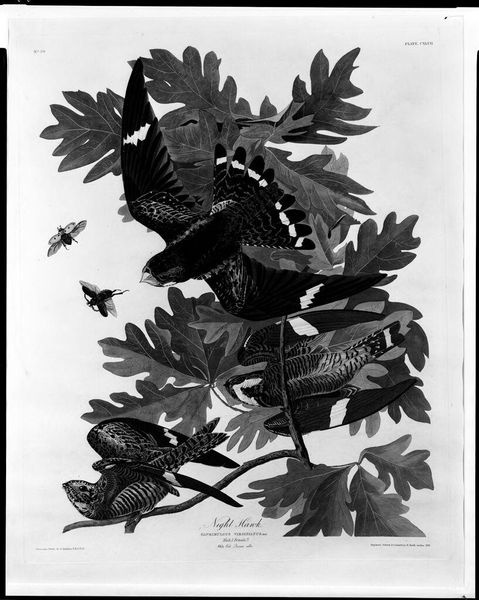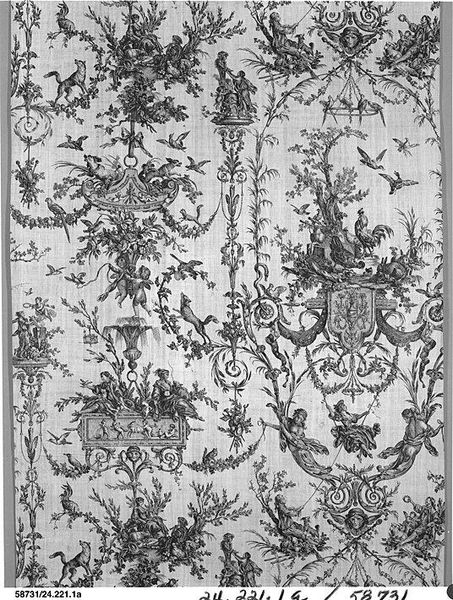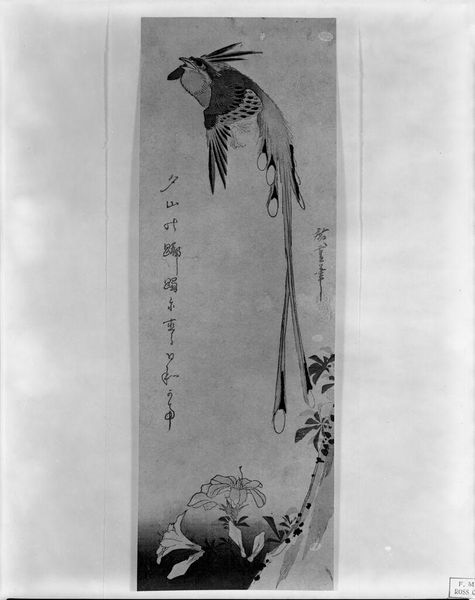
weaving, textile, sculpture
#
carving
#
sculpture
#
weaving
#
textile
#
sculptural image
#
folk-art
#
sculpture
#
decorative-art
#
rococo
Dimensions: H. 32 1/2 x W. 23 1/4 inches (82.6 x 59.1 cm)
Copyright: Public Domain
Curator: This textile panel, simply titled "Panel," was created by the Savonnerie Manufactory sometime between 1730 and 1760. It’s a fascinating example of weaving used to create a sculptural image. What strikes you about it? Editor: Oh, immediately, the way it feels like stepping into a vintage postcard. You know, those sepia-toned images that whisper stories of forgotten eras? There's something undeniably charming and old-world about this piece. Curator: The Savonnerie Manufactory was incredibly influential, especially in the decorative arts during the Rococo period. They operated under royal patronage and produced luxurious carpets and textiles for the French elite. Pieces like this served as symbols of status and refined taste. Editor: Absolutely, it’s fancy! But, fancy aside, I can't help but focus on the birds. A cockatoo looking very regal up there, then these… are they ducks below? All arranged almost like characters in a little play, the kind where the scenery’s the real star. Curator: Well, avian imagery was quite popular at the time, representing both natural beauty and, on occasion, political power. This particular composition reflects a broader interest in incorporating naturalistic elements into interior decoration. Think of it as bringing the gardens of Versailles indoors. Editor: Hmm, bringing nature inside. Do you think these wealthy owners ever looked at these images of idyllic country life, then out at their formal gardens, and felt a teeny bit sad they weren’t actually living it? There's this yearning embedded in the art, maybe, a gilded cage desire. Curator: That’s an interesting angle! Certainly, the tapestry served to project a certain vision of pastoral tranquility, and while the elite enjoyed immense privilege, societal constraints and courtly rituals could also feel restrictive. Art offered an escape, if only imaginative. Editor: Right! This makes me wonder, too, about the weaving itself. You know, someone sitting there, carefully interlacing threads. It's labor intensive and there’s such dedication poured into capturing these fleeting moments. It adds another layer, like a quiet act of devotion. Curator: Precisely. The technical skill is undeniable, showcasing a mastery of weaving techniques and a deep understanding of color and composition, that spoke to the factory's ambitions of the time. Editor: So, we have royal power, the desire for beauty, an echo of social constraint. Funny how much you can read into what at first glance looks like a simple decorative panel! Curator: Absolutely. These pieces provide invaluable insight into the aesthetics, values, and social dynamics of 18th-century France. I learn something new every time.
Comments
No comments
Be the first to comment and join the conversation on the ultimate creative platform.
